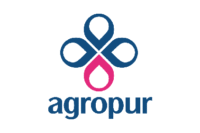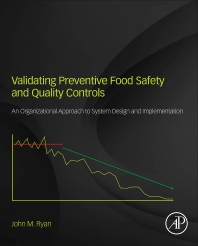
Legacy of Safety Continues
by Lynn Petrak
From HACCP to high-tech equipment, testing to
tamper-proofing, dairy processors stretch the safety net on their
products and processes.
It’s been more than a century since the first commercial milk pasteurization machines were introduced in 1895 and nearly 100 years since the first compulsory pasteurization laws were passed in 1908. With that kind of history, it is hard to take issue with those who note that dairy producers have demonstrated an early and aggressive commitment food safety.
“We have been more proactive versus other
industries,” agrees Marianne Smukowski, dairy safety applications
coordinator for the Wisconsin Center for Dairy Research, noting the more
modern examples the industry’s voluntary commitment to the Hazard
Analysis Critical Control Point (HACCP) programs.
Indeed, in the past century that spawned safety
initiatives right along with the growing commercialization of dairy
products, there have been scores of tools, pasteurization and HACCP systems
among them, in the farm-to-fork fight for food safety. From sterilized
milking machines and safe and effective vaccinations on the farm to
increasingly rapid testing of milk and products at various stages in the
dairy processing plant to the ever-stringent sanitation practice, safety is
a part of what every dairy producer and manufacturer does every day for
every single animal or product.
Closer to the “fork” side of that safety
net, meanwhile, there remains an area of vulnerability. According the U.S.
Department of Agriculture (USDA), 97 percent of all foodborne illnesses can
be prevented by improving food handling practices at home. In this area,
too, dairies continue to improve communication with consumers, through
clear labeling and educational messages.
The combined work over the years has paid off for
those who produce and consume dairy products. In a recent report, the
Centers for Disease Control and Prevention (CDC) in Atlanta, in
collaboration with the Food and Drug Administration (FDA) and USDA
recounted declines in foodborne infections due to common bacterial
pathogens, with incidences of Salmonella dropping eight percent, E. coli O157:H7 skidding 42 percent and Campylobacter decreasing 31 percent.
(The news was a bit different for Listeria, with the CDC reporting that the rate of Listeria-related foodborne illness
rose in 2005 from 2.7 cases per million to three cases per million).
Even with the arrow going in the right downward
direction for many foodborne illnesses, there is obviously more work to be
done and more work that is being done by dairy farmers, dairy
manufacturers, researchers, laboratories, industry organizations,
government agencies, retailers and foodservice operators.
“Foodborne disease is still a significant cause of illness in
the United States and further efforts are needed to sustain and extend
these important declines and to improve prevention of foodborne
illnesses,” remarked Dr. Julie Gerberding, director of the CDC, in a
statement last year.
The CDC chief’s assessment is shared by those in
the industry who carry the mantle of safety on a daily basis in their
respective dairy plants. “It’s ever changing and we have to
keep on the edge of change. You have to anticipate what could happen and
take care of it beforehand,” says Emil Nashed, vice president of
quality control and research and development for Wallington, N.J.-based
Farmland Dairies Inc., of his company’s comprehensive safety and
quality program.
Michael Neuwirth, spokesman for The Dannon Co., White
Plains, N.Y., concurs. “We are vigilant about safety, in terms of
taking precautions to protect our employees and to ensure the safety and
quality of our products for consumers,” he says.
Roadblocks
To be sure, there are quite a few acronyms tossed
about in the lexicon of food safety. Plant employees have to be well versed
in the ABCs of safety, and in particular, the GMPs, SSOPs, HACCPs, PMOs and
other shorthand terms for important programs geared to preventing
contamination in the perishable food chain.
Many point to organized HACCP programs as effective
ways to stem food safety problems before they start and cause problems at
the finished product level. Although still voluntary for those in the dairy
industry, many plants have instituted such programs on a range of levels
and several have become HACCP certified by the FDA.
“It’s proven very successful for us, and
it’s a good program because we also have SSOPs and SOPs for every
step of the operation, from the time milk comes in to the time it goes on
the truck. There is protocol that needs to be followed all the time and
validated on a regular basis to make sure it’s been done,”
Nashed says of Farmland’s HACCP program, which is the largest dairy
plant that has received formal certification from the FDA. “It gives
a sense of accountability — that I know I can be home at night
sleeping well. My philosophy is: My children drink our milk.”
Training on HACCP continues, conducted through
industry organizations or independent consultants. The International Dairy
Foods Association (IDFA), Washington, D.C., continues to successfully
sponsor HACCP workshops, including an upcoming program in late October in
Las Vegas.
“We are getting a lot more interest from the
dairy industry and are partnering with universities to sponsor additional
HACCP workshops. We went through a period when they [operators] would say,
‘I know what HACCP is, but I’m am not sure we understand how it
can contribute to our bottom line and make it work for us.’ Now,
there is a better industry understanding of HACCP’s value, and the
response is more ‘How can I better understand it to make it work
effectively for me?’” says Allen Sayler, IDFA’s senior
director of regulatory affairs. “It takes comprehensive training and
implementation to realize the full value of HACCP to the dairy
industry.”
The Wisconsin Center for Dairy Research is also
continuing its training programs on HACCP, according to Smukowski,
sponsoring regular short courses on the topic. She, too, underscores the
effectiveness of the system: “The industry has done it for several
years, and that’s why we have a good handle on addressing issues with
dairy and safety.”
Food safety programs comprise a variety of elements
that may be part of HACCP programs. One of the foundations is FDA’s
regulations for current good manufacturing Practices (GMPs). As plant
operations comply with GMPs and train employees about what those practices
are and how to follow them, industry organizations are also working on
behalf of dairies on the regulatory front.
IDFA helped represent the dairy industry’s
position, as part of an industry-wide coalition, to the FDA as that agency
continued its process of determining updates for GMPs for foods.
“IDFA members felt strongly that there were specific dairy issues
that needed to be voiced — that sometimes we had unique views that
differ slightly from other food sectors,” Sayler says, adding that
IDFA submitted comments to the FDA, which had asked for public comments on
a white paper published last year.
“We recommended that GMPs shouldn’t
contain specific time/temperature requirements for holding foods but
instead more general performance criteria. For example, we felt it was
appropriate that industry have training on GMPs for employees, but we felt
FDA shouldn’t be dictating content, frequency and other details, but
just determine that such training was in place.”
IDFA took a similar position on other FDA white paper
issues such as written sanitation programs for processing equipment, Listeria environmental
monitoring and an allergen management program, which IDFA noted should be
addressed by the industry but specific records related to these programs
should not be accessed or driven by the government.
As processors look to set up interventions along the
way, either as part of formal HACCP programs or another type of commitment
to safety, they are increasingly boosting their efforts in sanitation,
taking advantage of the latest in sanitizers and cleaners for personnel,
work surfaces and machinery, and clean-in-place (CIP) features for
equipment. “We are always upgrading our equipment and switching
chemicals and looking for the latest in sanitation,” Nashed says,
citing recent upgrades like the plant’s refrigeration system.
Changes and Improvements
As dairies upgrade food safety programs and equipment
and systems designed to prevent contamination or spoilage during processing
and transport, there have also been efforts to re-evaluate regulatory
requirements that are required for Grade A dairy products.
IDFA, for its part, is working to ensure safety while
helping dairy processors run their plants efficiently. In the last year,
Sayler has managed, on behalf of Grade A processors, the gathering of
information through literature searches, scientific reports and challenge
studies, to convince FDA of the safety of filling of cultured and acidified
products like sour cream, yogurt, buttermilk and cottage cheese at a
temperature above 45 degrees. “Each of these products has slightly
different characteristics and different challenges when you are trying to
cool them,” Sayler says. “FDA said they’d be willing to
work with us and not object to current industry filling and storage
practices as long as we were working in good faith to supply scientific
evidence to support a change to the regulations.”
As a result of the collaborative efforts, Sayler
reports that sour cream, buttermilk and yogurt can now be filled above 45
degrees. “It’s a huge thing for processors, because it provides
the scientific underpinning for industry practices we always knew was
safe,” Sayler says, noting the alternative would have translated into
real challenges for processors. “If we weren’t successful with
this, a processor would have had to install additional processing equipment
or stop production of these products. For example, with a product like
cottage cheese, you need that higher temperature for the cream dressing to
be absorb into the curd to get the desired texture and mouth feel the
consumer expects.”
Similarly, IDFA focused on quality and safety in
production in working with the government on changes to the federal Food
Codes dictating how products like cheeses must be held for safety,
including storage temperatures.
“The Food Code dictates specific temperatures
that food must be held at retail and food service establishments, whether
it is the time and temperatures that hot food must be held hot or cold food
held cold. There were concerns that certain cheeses may be safe if held out
of the required 41 degree F temperatures,” recalls Cary Frye,
IDFA’s vice president of regulatory affairs, recounting that IDFA
collaborated with researchers and the Wisconsin Department of Agriculture
Trade & Consumer Protection (WDATCP) to submit a proposal to the
Conference of Food Protection recommending that the Food Code be amended to
exempt specific cheese from the current 41-degree storage and display
requirements. “We’ve moved it forward in that NCI [National
Cheese Institute] was directed to work further with FDA on this matter.
This is the beginning of a project designed to apply current science to
cheese safety.”
Smukowski is also heavily involved with the cheese
storage issue. “We’ve been getting a ton of questions on
that,” she says, noting that she and colleague Rusty Bishop wrote a
paper on the topic, relating the Center’s research on cheeses and
storage temperatures that will be published in an upcoming publication of Journal of Food Production Trends.
Valide and Verify
Just because a product goes through the process stage
doesn’t mean it’s automatically deemed safe. Testing is an
integral tool used by all types of dairy manufacturers to validate the
quality and safety of the product at various stages in production.
In addition to tests that take place on the farm for
animal health and raw milk, myriad tests are conducted in dairy processing
facilities.
Whether performed in a company’s own laboratory,
sent to an outside lab or checked in house by a third party, tests today
are designed to be more reliable and fast. The expanded use of adenosine
triphosphate (ATP) biolumincnece testing is one example, through which
potential contaminants are identified by the detection of light emitted
from living organisms. Processors use luminometers to check work surfaces
and, in some foods like meat carcasses, the product itself.
Farmland, for its part, uses an array of evaluations
in its dairy facility, including ATP bioluminescence tools. “That is
a good technology, because instead of waiting five days, you wait two days.
You can get on-the-spot results and know what we are doing,” Nashed
says. “We are looking at anything new to enhance food safety.”
Farmland has its own certified lab and also uses outside testing services.
Silliker Inc., Homewood, Ill., handles a steady stream
of dairy samples through its microbiological testing services, according to
Kathy Alamo, operations manager, dairy program for the company’s
Modesto, Calif.-based Northern California Laboratory. “Most food
processors use third-party testing for the obvious reason of keeping
pathogens out of their plants,” she says. “We are seeing an
increase in popularity of third-party auditing among dairy companies for
internal benchmarking and to meet customer vendor requirements.”
Cleveland-based Pierre’s Ice Cream, which has a
robust HACCP program that has been recognized by the state of Ohio, also
takes advantage of third party audits and conducts extensive testing of its
facilities and products. Among other tools, the company conducts Listeria testing on all of
its finished products, which is not mandatory and, for that matter, not
common in the industry. “Nothing is released from the production
building over to the distribution building until it clears all the
batteries of tests,” reports plant manager John Gaughan. “Each
product is evaluated daily by the operator, by the flavor man, by our
quality manager.”
Safety With Security
In the farm-to-fork chain, production, processing and
testing are usually followed by packaging. In that area, many of food
safety measures are targeted toward ensuring the integrity of the package,
through its material and closures, to prevent any leakage or deliberate or
accidental access.
In the wake of biosecurity concerns and subsequent
steps taken by food manufacturers in the wake of bioterrorism concerns and
government-led protective measures, tamper evidence has become one of the
priorities of those that bottle or package dairy products. Suppliers have
helped button up packaging, so to speak, with tamper-resistant and
tamper-evident caps and closures, with features ranging from pull tabs with
rings to foil or plastic overwraps on tub products to seals and bands
around ice cream carton lids.
As processors experiment and apply innovations in
package features driven by the need for biosecurity, the industry itself
also must keep an eye on regulatory issues affecting package design. In the
past year, IDFA worked with several of its members to provide input to the
FDA on a protocol concerning the agency’s testing for tamper
detectability of plastic milk container closures.
In mid-August, FDA released its final protocol.
“There were points in the protocol that would be helpful to
processors. It’s not approving one type of closure over another or
requiring a foil seal, for example, but it’s based on how containers
and closures together function properly,” says Michelle Matto, IDFA
assistant director for regulatory affairs.
Emerging Issues
Preventing foodborne illness and ensuring safety and
quality through pathogen control has long been the directive of safety
initiatives within and beyond the processing stage.
While Salmonella, Listeria and other microbes have garnered a lot of attention and
newer bugs of concern like Mycobacterium
paratuberculosis are spurring a closer
look within the industry, another emerging safety concern in recent years
has been related to allergens. With last year’s passage of the Food
Allergen Labeling and Consumer Protection Act, dairies have been ramping up
their efforts related in this area. Dairy is listed as one of the eight top
allergens, and many dairy plants use other allergens, such as tree nuts and
wheat.
At the Wisconsin Center for Dairy Research, Smukowski
reports she is fielding more queries about allergens among dairy
businesses. “I get a lot of questions on the situation and I think
there is some education that can be done in the allergen area and with
labeling,” she says. “There is always training that needs to be
done and it all ties into the food safety system.”
Silliker’s Alamo agrees. “Allergens are of
increasing concern to dairy processors in connection with various
ingredients in ice cream and yogurt formulations,” she says, adding
that the industry is well suited to getting out in front of the issue
before there are major problems. “Historically, the dairy industry
has taken the lead in food safety — not only from the regulatory
standpoint, but also from the competitive aspects of protecting brands and
reinforcing the image of dairy as nature’s most perfect
food.”
At the individual dairy company level, meanwhile,
manufacturers are heeding the importance of proper labeling and production
as those functions relate to allergens.
Dannon, for instance, recently rolled out a new Light
& Fit Crave Control product that contains the listed allergen of wheat,
and notified the Food Allergy Action Network (FAAN), Neuwirth says. FAAN
was informed that the new reduced-sugar nonfat yogurt made with fruit,
cereal and ProteinFiberPlus is the only Dannon product to contain wheat.
Lynn Petrak is a freelance journalist based in the
Chicago area.
$OMN_arttitle="Legacy of Safety Continues";?>







